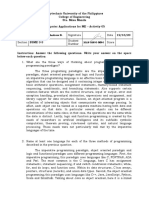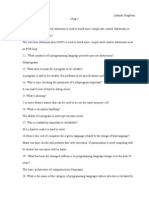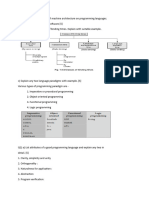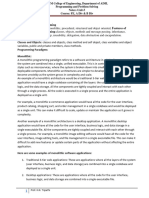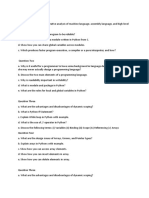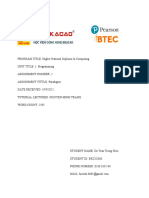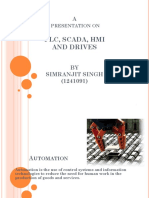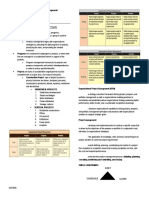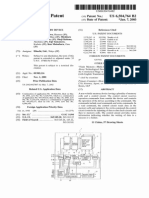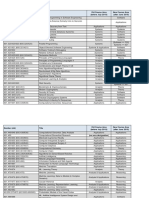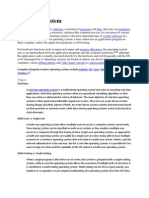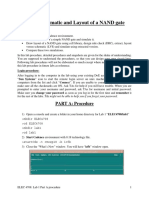1. What are the key features of programming languages according to the reference text?
A. Syntax, Data Types, Variables, Functions, Loops, Classes, Modules
B. Syntax, Data Structures, Algorithms, Functions, Objects, Modules, Libraries
C. Syntax, Data Types, Variables, Operators, Control Structures, Libraries and Frameworks, Paradigms
D. Syntax, Functions, Loops, Classes, Inheritance, Encapsulation, Polymorphism
2. What is the purpose of an Integrated Development Environment (IDE) in programming
languages?
A. To define complex structures and enhance usability.
B. To support parallel processing and dynamic memory allocation.
C. To provide a single environment for development, debugging, testing, and maintenance of
programs.
D. To execute programs efficiently and consume less memory space.
3. What is the advantage of using programming languages with high programming efficiency
according to the reference text?
A. Run on multiple operating systems and platforms.
B. Make code more readable and understandable.
C. Easily convert programs into machine code and consume less memory space during execution.
D. Provide a set of abstractions for quick code writing.
4. What is the purpose of the lambda calculus in programming language theory?
A. To model computation and express functions based on function abstraction and application.
B. To provide a set of instructions for a computer to perform specific tasks.
C. To facilitate the practice of good program design and allow module reuse.
D. To define complex structures and enhance usability.
5. What is the significance of the Bohm-Jacopini theorem in programming language theory?
A. It focuses on the design, implementation, and analysis of programming languages.
B. It defines the types of programs written for the Turing machine.
C. It deals with the process of selecting implementations of polymorphic operations at runtime.
D. It shows that any program can be rewritten using sequence, selection, and repetition techniques.
�6. What is the purpose of dynamic dispatch in programming languages according to the reference
text?
A. To handle parallel processes or processes divided among multiple cores.
B. To convert data objects into a format for storage or transmission.
C. To select the implementation of a polymorphic operation at runtime.
D. To create a new class for using details of an existing class without modifying it.
7. What is the role of serialization in programming languages as per the reference text?
A. To create a new class for using details of an existing class without modifying it.
B. To convert data objects into a format for storage or transmission and recreate the object when
needed.
C. To select the implementation of a polymorphic operation at runtime.
D. To handle parallel processes or processes divided among multiple cores.
8. What is the benefit of using multiprocessing in programming according to the reference text?
A. Faster execution, reduced overhead, and streamlined code.
B. Improved memory utilization, dynamic scaling, and effective memory use.
C. Efficient function calls, reduced redundancy, and maximized speed.
D. Better usage of the CPU, more control over child processes, and easier coding.
9. What is the purpose of shared memory parallelism in parallel computing as per the reference
text?
A. Processes communicate through a network interface, enabling communication between
distributed processes.
B. Processes run independently and communicate only when necessary, reducing the need for
explicit communication.
C. Processes communicate through the same memory space, allowing for easier communication and
data sharing.
D. Processes are totally separated and have their own memory space, reducing conflicts in memory
access.
�10. What is the significance of dynamic memory allocation in Python programming according to
the reference text?
A. Dynamic memory allocation involves allocating memory at runtime and offers a way to store or
transmit data.
2. Dynamic memory allocation is used for dividing program instructions among multiple processors,
reducing processing time.
3. Dynamic memory allocation offers flexibility in memory utilization and works through data
structures like lists, dictionaries, and objects.
D. Dynamic memory allocation refers to declaring data structures or allocating memory at the time of
compilation.



